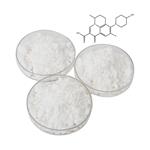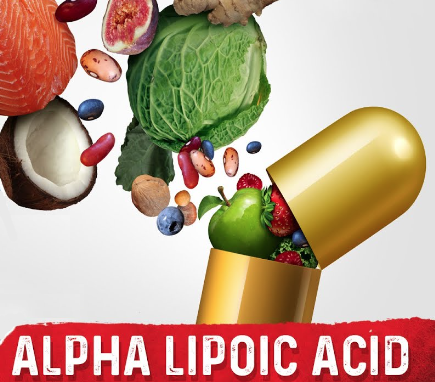Rivaroxaban: A Comprehensive Overview of Its Synthesis, Composition, and Applications
Jun 6,2024
Introduction
Rivaroxaban, a highly selective direct factor Xa inhibitor, has emerged as a prominent figure in the landscape of anticoagulant medications. Marketed under brand names such as Xarelto, it has been widely adopted for various clinical uses due to its efficacy and predictable pharmacokinetics. This groundbreaking medication offers a significant advancement over traditional anticoagulants like warfarin, as it requires no routine monitoring of blood coagulation levels, thereby simplifying treatment regimens for patients and clinicians alike. Its development represents a pivotal shift in thromboembolic disease management, making it a key player in cardiovascular therapy.

Figure 1 Characteristics of Rivaroxaban
Synthesis of Rivaroxaban
The synthesis of Rivaroxaban is a testament to modern chemical engineering and pharmaceutical science. The process involves the selective inhibition of the coagulation factor Xa, an enzyme essential for the conversion of prothrombin to thrombin in the blood coagulation cascade. The synthesis starts with the construction of a chlorothiophene ring, followed by the introduction of a 4-fluorophenyl group. Key steps include a Wittig reaction to form the olefin, which is then hydrogenated to produce the final active Rivaroxaban molecule. This synthesis not only demonstrates chemical ingenuity but also allows for the large-scale production necessary for global distribution.
Main Components
Rivaroxaban's molecular structure includes several crucial components that contribute to its mechanism of action. The core of Rivaroxaban is the oxazolidinone ring, which is essential for its anticoagulant activity. Attached to this ring are various substituents including a morpholinylphenyl moiety that enhances its drug-like properties such as solubility and metabolic stability. Additionally, the presence of a chlorothiophene group further augments its efficacy by increasing its binding affinity to factor Xa. The chemical formula for Rivaroxaban, C19H18ClN3O5S, reflects a complex arrangement of atoms tailored to target and inhibit factor Xa specifically and effectively, ensuring high potency and targeted action in the coagulation cascade.
Applications
The therapeutic applications of Rivaroxaban are broad and significant. It is primarily used for the prevention of stroke in patients with atrial fibrillation, treatment of deep vein thrombosis (DVT), and pulmonary embolism. Rivaroxaban is also employed in the prophylaxis of DVT following knee or hip replacement surgery. Its ability to offer a fixed-dose regimen without the need for routine coagulation monitoring gives it an advantage over traditional anticoagulants like warfarin. Beyond these applications, Rivaroxaban has also been explored for its potential to reduce the risk of recurrent myocardial infarction and prevent thrombotic cardiovascular events in high-risk patients. Its mode of action allows for quick onset and predictable effects, which is crucial in acute settings where rapid anticoagulation is necessary. Furthermore, Rivaroxaban is being studied in the context of cancer-associated thrombosis, where its use could simplify treatment protocols and potentially improve patient outcomes. This versatility and the breadth of its applications underscore Rivaroxaban’s integral role in modern pharmacotherapy, offering a safer and more effective alternative for managing a spectrum of thromboembolic disorders.
Storage Guidelines
Proper storage of Rivaroxaban is crucial for maintaining its efficacy and safety. The drug should be stored at room temperature, away from moisture and heat. Tablets should remain in their original packaging to protect them from light and moisture until they are needed. Rivaroxaban must be kept out of reach of children and pets to prevent accidental ingestion, which could lead to severe bleeding complications.
Conclusion
Rivaroxaban stands out in the anticoagulant market for its targeted action, ease of use, and comprehensive applications. From its intricate synthesis to its careful storage, every aspect of Rivaroxaban is designed with precision to ensure it delivers optimal performance in preventing and treating thromboembolic disorders. As research continues and its applications expand, Rivaroxaban is likely to play an increasingly vital role in modern medicine, offering hope and improved outcomes for patients at risk of thrombotic events.
References
[1]Samama, Meyer Michel, et al. "Laboratory assessment of rivaroxaban: a review."Thrombosis journal11 (2013): 1-7.
[2]Perzborn, E., D. Kubitza, and F. Misselwitz. "Rivaroxaban."H?mostaseologie27.04 (2007): 282-289.
- Related articles
- Related Qustion
- Rivaroxaban: Uses, Dose, Mechanism of action and Side effects Jun 7, 2024
Rivaroxaban is an oral antithrombotic medicine usually sold in the form of tablets and suspension (liquid).
- Rivaroxaban Jul 26, 2022
Rivaroxaban (Xarelto?), an oral oxazolidinone-based anticoagulant, is a potent, selective direct inhibitor of factor Xa
?α-Lipoic Acid is an antioxidant made naturally in the body and found in foods. It is used to break down carbohydrates and to make energy.....
Jun 5,2024Natural ProductsSulfamethoxazole is a synthetic antibiotic, commonly used in combination with trimethoprim to treat a variety of bacterial infections.....
Jun 6,2024APIRivaroxaban
366789-02-8You may like
- Rivaroxaban
-

- $0.00 / 1KG
- 2024-09-10
- CAS:366789-02-8
- Min. Order: 1KG
- Purity: USP/EP WC+DMF D90 < 10um
- Supply Ability: 20 tons
- Rivaroxaban
-

- $0.00 / 1kg
- 2024-09-10
- CAS:366789-02-8
- Min. Order: 1kg
- Purity: 99%min
- Supply Ability: 20ton
- Rivaroxaban
-

- $0.00 / 1Kg/Bag
- 2024-09-06
- CAS:366789-02-8
- Min. Order: 1KG
- Purity: 98%-102%
- Supply Ability: 100 KGS





